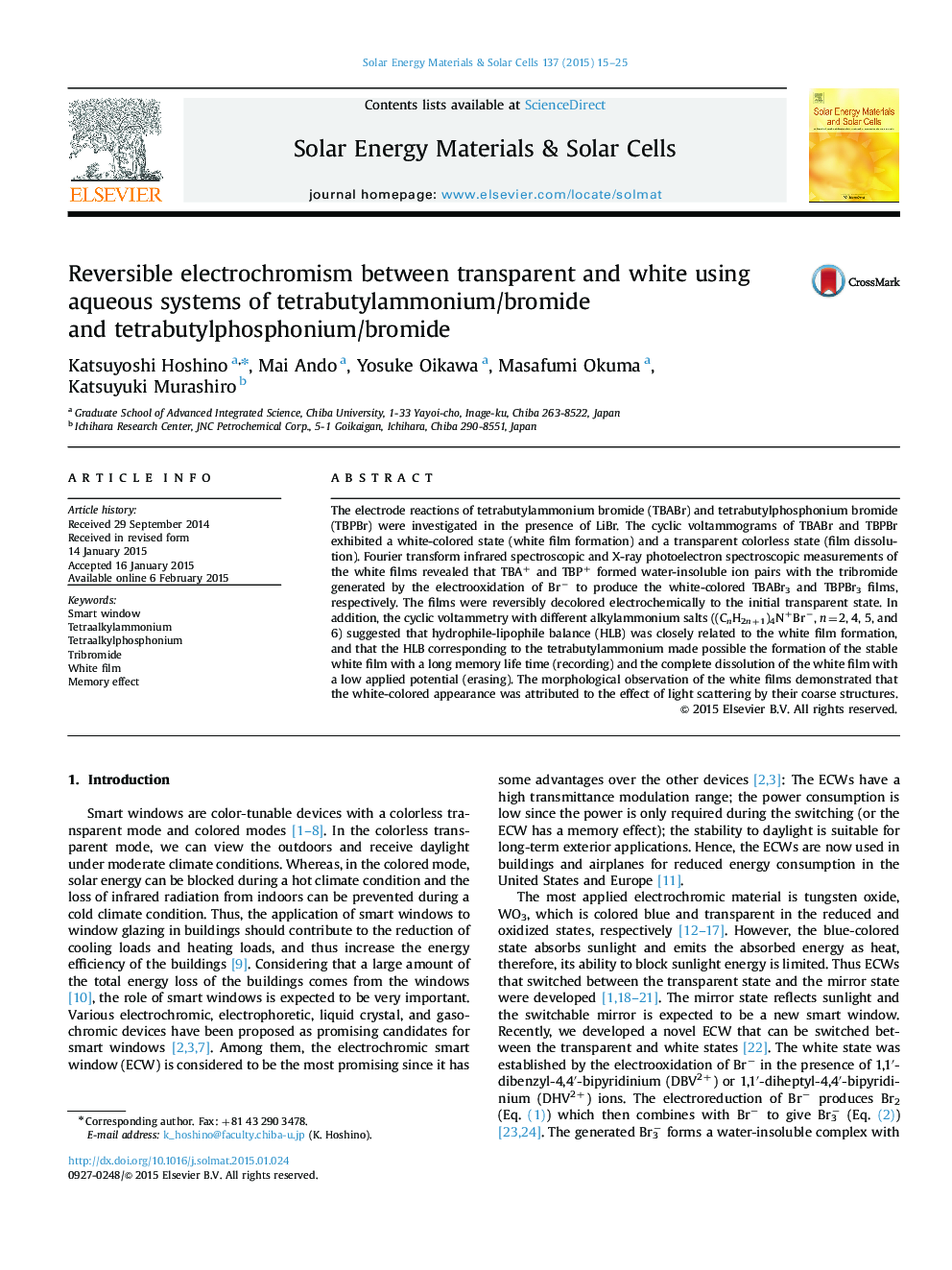| کد مقاله | کد نشریه | سال انتشار | مقاله انگلیسی | نسخه تمام متن |
|---|---|---|---|---|
| 77844 | 49307 | 2015 | 11 صفحه PDF | دانلود رایگان |

• Reversible electrochromism between transparent and white was developed.
• The chromism was shown by (C4H9)4NBr/(C4H9)4NBr3 or (C4H9)4PBr/(C4H9)4PBr3 couples.
• The white coloration–decoloration provided inexpensive electrochromic smart windows.
• The white-colored states have a memory lifetime of at least 10,000 s.
• The white coloration–decoloration was controlled by the HLB of the quaternary salts.
The electrode reactions of tetrabutylammonium bromide (TBABr) and tetrabutylphosphonium bromide (TBPBr) were investigated in the presence of LiBr. The cyclic voltammograms of TBABr and TBPBr exhibited a white-colored state (white film formation) and a transparent colorless state (film dissolution). Fourier transform infrared spectroscopic and X-ray photoelectron spectroscopic measurements of the white films revealed that TBA+ and TBP+ formed water-insoluble ion pairs with the tribromide generated by the electrooxidation of Br− to produce the white-colored TBABr3 and TBPBr3 films, respectively. The films were reversibly decolored electrochemically to the initial transparent state. In addition, the cyclic voltammetry with different alkylammonium salts ((CnH2n+1)4N+Br−, n=2, 4, 5, and 6) suggested that hydrophile-lipophile balance (HLB) was closely related to the white film formation, and that the HLB corresponding to the tetrabutylammonium made possible the formation of the stable white film with a long memory life time (recording) and the complete dissolution of the white film with a low applied potential (erasing). The morphological observation of the white films demonstrated that the white-colored appearance was attributed to the effect of light scattering by their coarse structures.
Figure optionsDownload as PowerPoint slide
Journal: Solar Energy Materials and Solar Cells - Volume 137, June 2015, Pages 15–25